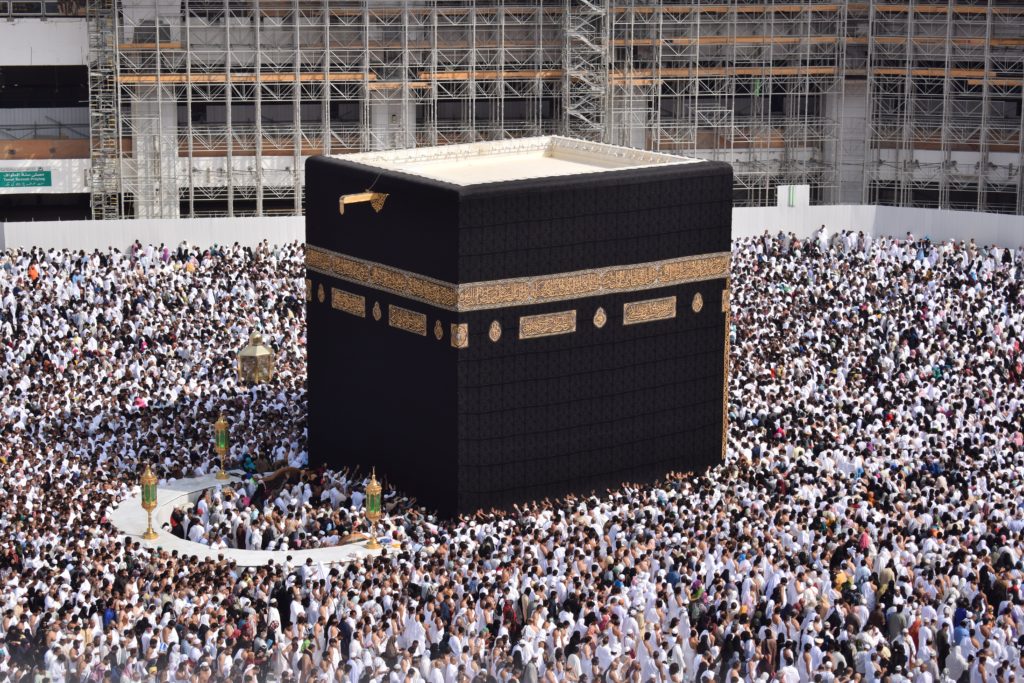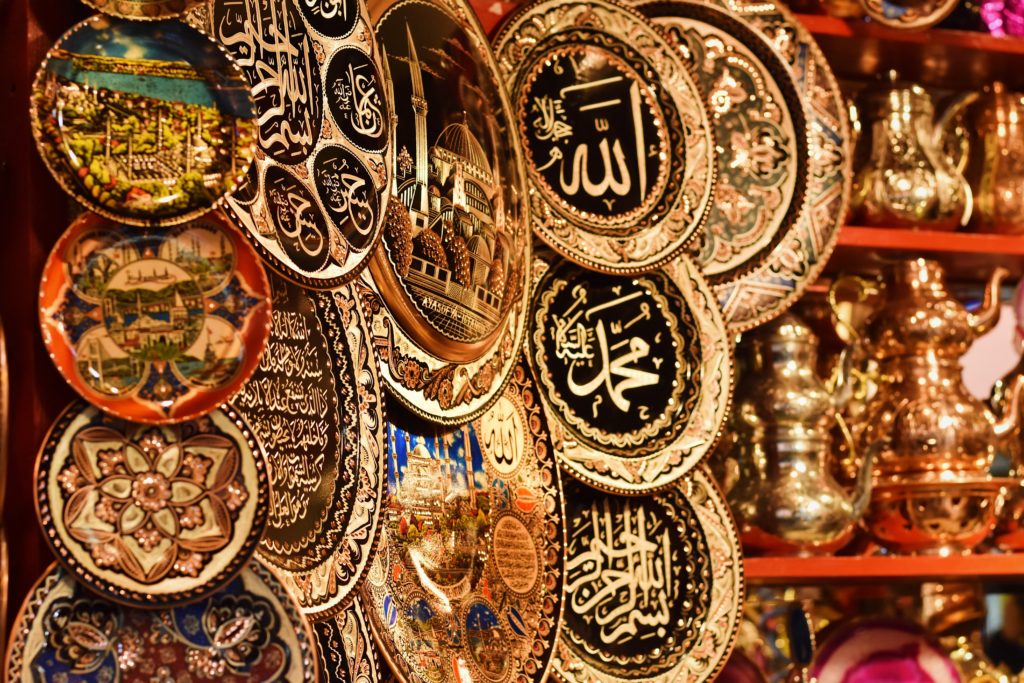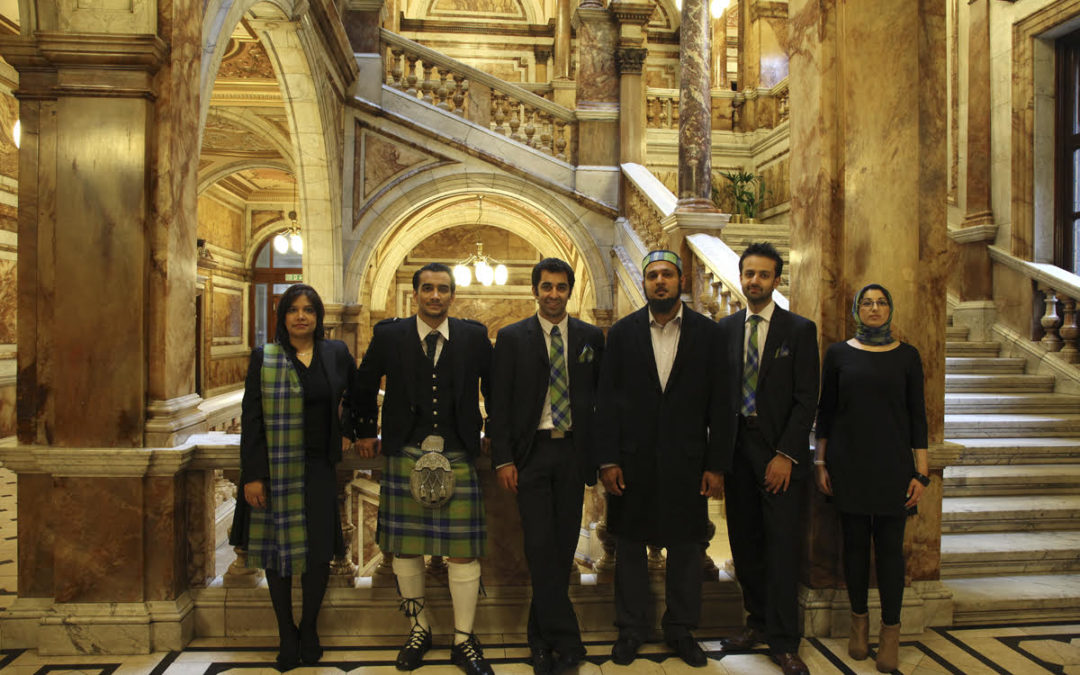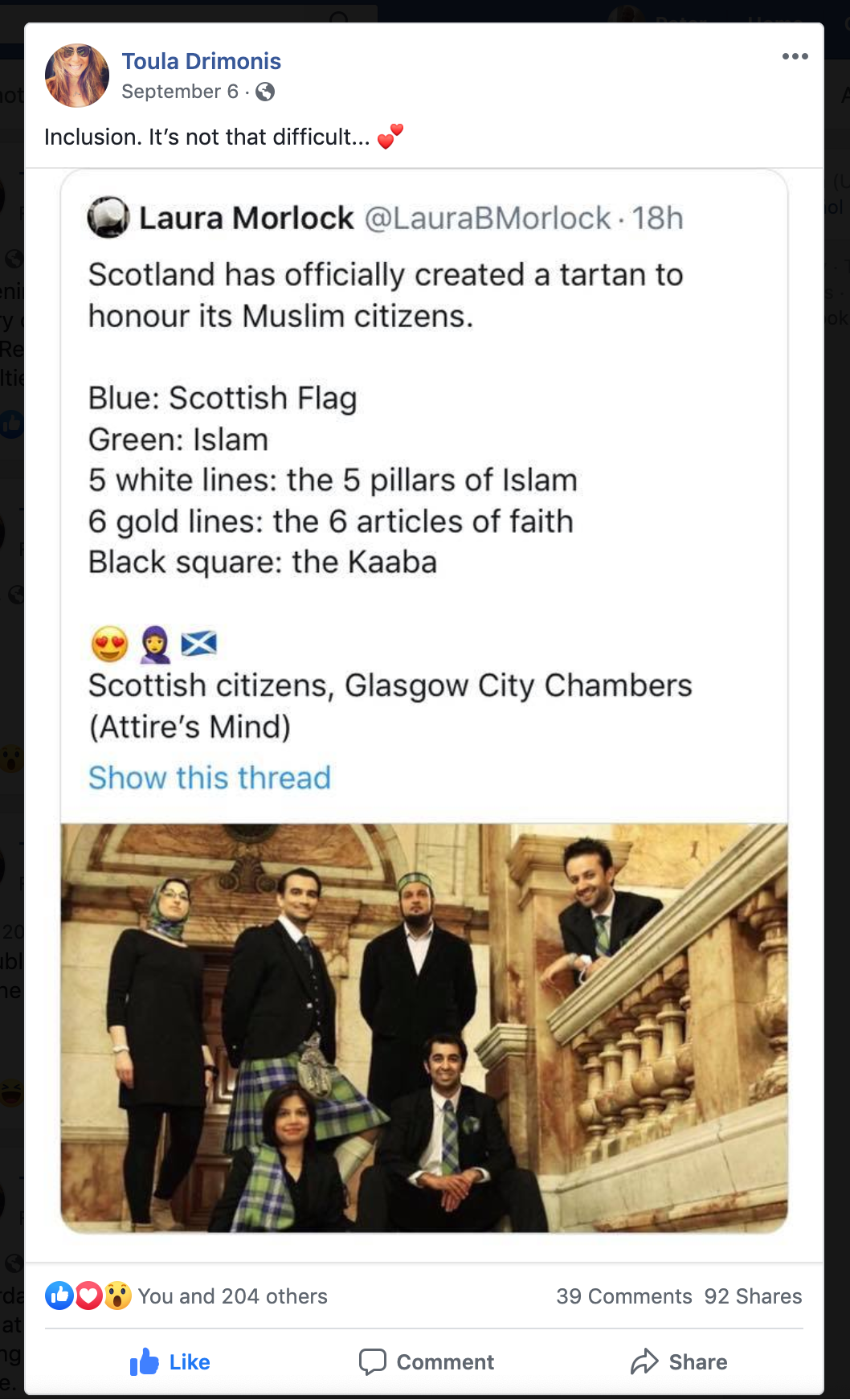As I was checking my newsfeed, I happened upon a gem. Toula Drimonis has reliably delivered thought-provoking and humorous pieces, sometimes both at the same time.
Today was no different.
The title of this article is her caption that I borrowed, as I couldn’t have said it any better.
Here is the post:
Scotland has created an official Tartan to recognize the contribution of Muslim communities to Scotland over the centuries.
What is it?
Tartans are traditional cloth patterns that represent a clan. Scottish academic Dr. Azeem Ibrahim developed this concept after consulting leading Islamic scholars and engaged the services of a top tartan designer in Scotland.

The result? A beautiful tartan pattern full of deliberate meaning.
The pattern breakdown is as follows:
- Blue to represent the Scottish Flag
- Green to represent the color of Islam
- Five white lines running through the pattern to represent the five pillars of Islam
- Six gold lines to represent the six articles of faith
- Black square to represent the Holy Kabah
This is a gorgeous example weaving together the contribution from different sources to creating something entirely new while giving homage to its original parts.

In no way does it diminish the ancient Scottish traditions of tartan, nor does it conflict with Islamic theology.
It is something to admire, to wear with pride. It’s not something to fear.
It also reinforces that this community and others are welcome, which is an essential signal in these tumultuous times of rising populism and bigotry.

Scotland understands that it has more to lose by disenfranchising the minorities that add to its whole, and this is true for every other country, whether their leaders understand this or not.
Cultural appropriation, anyone?
Think again!
Cultural appropriation happens when one culture adopts elements of another culture, usually a dominant culture appropriating from a disadvantaged minority culture without profiting from it without any consideration or credit from the source. It has been especially prevalent in the US.
In the case of the Islamic tartan, the intention was inclusion and not profit. This vital differentiation sets the tone. The relevant experts and thought leaders were consulted and considered.

The result is a beautiful example of inclusion – not merely tolerance (a word I dislike as it implies it’s something I don’t like, but only tolerate)
It starts with the right mindset.
Setting the right mindset and intention has a tremendous impact on the outcome. Akin a foundation stone; it’s what the rest is built on, and in this case, I largely credit it for the successful outcome.

The mindset of openness, curiosity, and humility can be applied to many other contexts.
Not getting along with a neighbor from another culture? Butting heads with a colleague.
What is your intent? Do you want to be right? Or do you want to understand?
Understanding each other is the first step to finding a solution that works for all parties? Amid conflict, it’s sometimes hard to step back from the brink, but we must.
I look at disagreements as an opportunity to see things from a new angle. We can listen and consider the other side without agreeing. Sometimes we learn something new that leads us to adjust our views. Other times we simply get to understand and empathize better with them.

Tartan for your team
No, I’m not suggesting that you design a tartan for your team, but it’s the same approach that leads to inclusive team cultures. Though if you chose to create some cool new design for your organization, please send me a picture.
Start by recognizing the different teams and cultures within your organization. The sales teams and the engineering group will have different cultures – in this case, professional cultures.

The more obvious cultural differences are ethnic – where a different skin tone or accent immediately signals possible differences.
The diversity of perspective, world-views that come from the diversity of culture has already been proven to provide a better judgment, effectiveness, creativity, and innovation.

Moreover, certain cultural groups have specific strengths that can be leveraged in specific contexts. Certain cultural traits are best for early-stage companies where resourcefulness is needed while other characteristics are best for mature industries where disciplined, and long term orientation is required in order to build efficient and scalable systems.
The secret sauce for the twenty first century
Just like the Islamic tartan, creating a third culture, one that combines the best of your individual team members’ cultures, is what creates healthy, inclusive cultures where everyone brings their strengths and are fully engaged.
This is the secret sauce for success this century and beyond.
If you created your own tartan or your teams, what colors would it? What would their meaning be?


